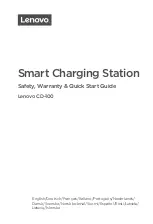
Rev. 1.10
124
November 04, 2019
Rev. 1.10
125
November 04, 2019
HT45F5Q-3
Battery Charger Flash MCU
HT45F5Q-3
Battery Charger Flash MCU
• UBRG Register
Bit
7
6
5
4
3
2
1
0
Name
UBRG7
UBRG6
UBRG5
UBRG4
UBRG3
UBRG2
UBRG1
UBRG0
R/W
R/W
R/W
R/W
R/W
R/W
R/W
R/W
R/W
POR
x
x
x
x
x
x
x
x
“x”: unknown
Bit 7~0
UBRG7~UBRG0
: Baud Rate values
By programming the UBRGH bit in UUCR2 Register which allows selection of the
related formula described above and programming the required value in the UBRG
register, the required baud rate can be setup.
Note: Baud rate=f
H
/[64×(N+1)] if UBRGH=0.
Baud rate=f
H
/[16×(N+1)] if UBRGH=1.
Baud Rate Generator
To setup the speed of the serial data communication, the UART function contains its own dedicated
baud rate generator. The baud rate is controlled by its own internal free running 8-bit timer, the period
of which is determined by two factors. The first of these is the value placed in the baud rate register
UBRG and the second is the value of the UBRGH bit with the control register UUCR2. The UBRGH
bit decides if the baud rate generator is to be used in a high speed mode or low speed mode, which in
turn determines the formula that is used to calculate the baud rate. The value N in the UBRG register
which is used in the following baud rate calculation formula determines the division factor. Note that
N is the decimal value placed in the UBRG register and has a range of between 0 and 255.
UUCR2 UBRGH Bit
0
1
Baud Rate (BR)
f
H
/ [64 (N+1)] f
H
/ [16 (N+1)]
By programming the UBRGH bit which allows selection of the related formula and programming
the required value in the UBRG register, the required baud rate can be setup. Note that because the
actual baud rate is determined using a discrete value, N, placed in the UBRG register, there will be
an error associated between the actual and requested value. The following example shows how the
UBRG register value N and the error value can be calculated.
Calculating the Baud Rate and Error Values
For a clock frequency of 4MHz, and with UBRGH cleared to zero determine the UBRG register
value N, the actual baud rate and the error value for a desired baud rate of 4800.
From the above table the desired baud rate BR=f
H
/[64 (N+1)]
Re-arranging this equation gives N=[f
H
/(BR×64)]-1
Giving a value for N=[4000000/(4800×64)]-1=12.0208
To obtain the closest value, a decimal value of 12 should be placed into the UBRG register. This
gives an actual or calculated baud rate value of BR=4000000/[64×(12+1)]=4808
Therefore the error is equal to (4808-4800)/4800=0.16%
UART Setup and Control
For data transfer, the UART function utilizes a non-return-to-zero, more commonly known as NRZ,
format. This is composed of one start bit, eight or nine data bits, and one or two stop bits. Parity
is supported by the UART hardware, and can be setup to be even, odd or no parity. For the most
common data format, 8 data bits along with no parity and one stop bit, denoted as 8, N, 1, is used
as the default setting, which is the setting at power-on. The number of data bits and stop bits, along
with the parity, are setup by programming the corresponding UBNO, UPRT, UPREN, and USTOPS
bits in the UUCR1 register. The baud rate used to transmit and receive data is setup using the
internal 8-bit baud rate generator, while the data is transmitted and received LSB first. Although the
















































